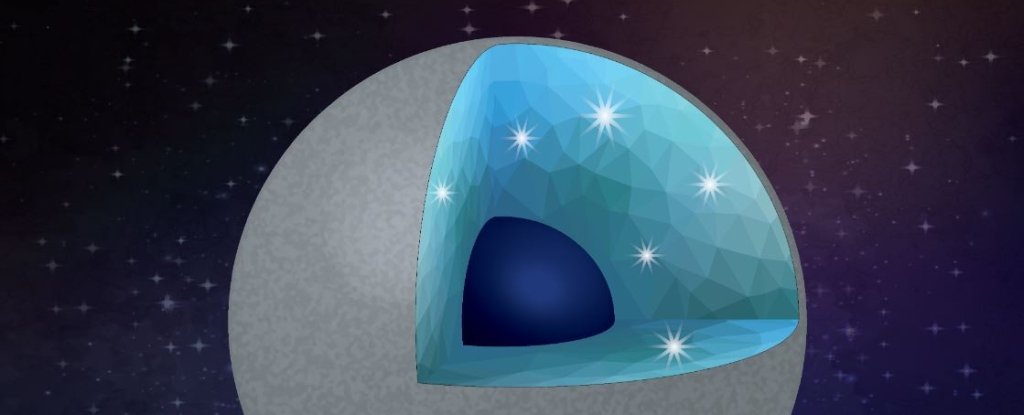
Myriad Exoplanets in Our Galaxy Could Be Made of Diamond And Rock
by MICHELLE STARRHere in the Solar System, we have quite an interesting variety of planets, but they are limited by the composition of our Sun. Since the planets, moons, asteroids and other bodies are made out of what was left over after the Sun was finished forming, their chemistry is thought to be related to our host.
But not all stars are made out of the same stuff as our Sun, which means that out there in the wide expanses of our galaxy, we can expect to find exoplanets wildly different from the offering in our little Solar System.
For example, stars that are rich in carbon compared to our Sun - with more carbon than oxygen - could have exoplanets that are made primarily of diamond, with a little bit of silica, if the conditions are just right. And now, in a lab, scientists have squished and heated silicon carbide to find out what those conditions could be.
"These exoplanets are unlike anything in our Solar System," said geophysicist Harrison Allen-Sutter of Arizona State University's School of Earth and Space Exploration.
The idea that stars with a higher carbon-to-oxygen ratio than the Sun might produce diamond planets first emerged with the discovery of 55 Cancri e, a super-Earth exoplanet orbiting a star thought to be rich in carbon 41 light-years away.
It was later discovered that this star wasn't as carbon-rich as previously thought, which put paid to that idea - at least as far as 55 Cancri e is concerned.
But between 12 and 17 percent of planetary systems could be located around carbon-rich stars - and with thousands of exoplanet-hosting stars identified to date, the diamond planet seems a distinct possibility.
Scientists have already explored and confirmed the idea that such planets are likely to be composed primarily of carbides, compounds of carbon and other elements. If such a planet was rich in silicon carbide, the researchers hypothesised, and if water was present to oxidise the silicon carbide and convert it into silicon and carbon, then with sufficient heat and pressure, the carbon could become diamond.
In order to confirm their hypothesis, they turned to a diamond anvil cell, a device used to squeeze small samples of material to very high pressures.
They took minute samples of silicon carbide and immersed them in water. Then, the samples were placed in the diamond anvil cell, which squeezed them to pressures up to 50 gigapascals - about half a million times Earth's atmospheric pressure at sea level. After the samples had been squeezed, the team heated them with lasers.
In all, they conducted 18 runs of the experiment - and they found that, just as they had predicted, at high heat and high pressure, their silicon carbide samples reacted with water to convert into silica and diamond.
Thus, the researchers concluded that at temperatures of up to 2,500 Kelvin, and pressures up to 50 gigapascals, in the presence of water, silicon carbide planets could become oxidised, and have their interior compositions dominated by silica and diamond.
If we could identify these planets - perhaps by their density profiles, and the composition of their stars - we could therefore rule them out as planets that could host life.
Their interiors, the researchers said, would be too hard for geological activity, and their composition would make their atmospheres inhospitable to life as we know it.
"This is one additional step in helping us understand and characterise our ever-increasing and improving observations of exoplanets," Allen-Sutter said.
"The more we learn, the better we'll be able to interpret new data from upcoming future missions like the James Webb Space Telescope and the Nancy Grace Roman Space Telescope to understand the worlds beyond on our own Solar System."
The research has been published in The Planetary Science Journal.